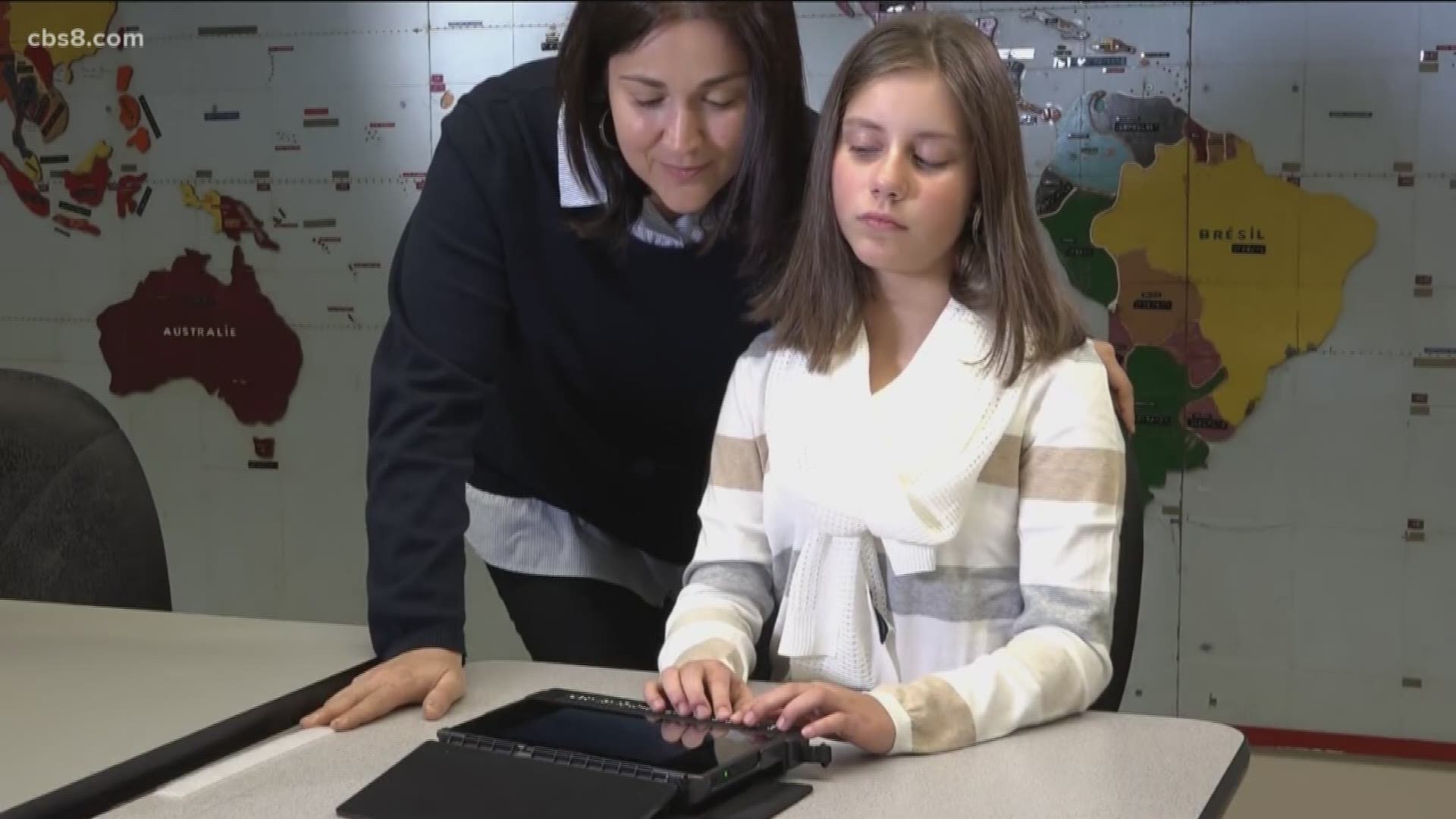SAN DIEGO — Schools in the San Diego Unified School District have moved to distance learning because of the coronavirus pandemic, but how is the new education system working for students who are deaf, hard of hearing, or visually impaired?
“It is a challenge. Especially because in the deaf and hard of hearing world, it is in-person, in front of you is really the ideal way that you’re teaching,” said Cory Hoffman, Lead Teacher for the district’s Deaf/ Hard of Hearing Program.
Hoffman is the daughter of two teachers. She is married to a teacher of teachers, Reuben Hoffman, a resource instructor for the district.
“Not all of our families sign at home. The challenges for the teachers are how do we support the kids at home, but how also do we support the families,” Hoffman said.
One high school teacher recorded a Google tutorial with signing and closed captioning to show students hard of hearing how they can set up a Zoom account to participate in zoom video instruction.
“Some of them are able to get on by having cochlear implants that might connect through a coil to a computer,” she said.
Another teacher created a math lesson video in American Sign Language that showed students how to add 67 plus 28. Still, some students need transcribers and interpreters as they’re used to throughout the traditional school year.
“So how do we replicate that service in a distance learning setting? That has been a challenge. How do they send it to our department beforehand so we can embed maybe a little bubble on the screen who has a little interpreter interpreting?” Hoffman said.
Another a high school teacher had an assignment where she had the students all on the same Google document, responding and typing together in the comments section.
"There’s a lot of programs where the teachers send out something, and there’s a little microphone. The kids can respond and send that back via voice," Hoffman said.
For students with sight challenges, some are using the BrailleNote Touch, which combines a note taker with a tablet. Others are navigating web pages with the JAWS screen-reading software.
Hoffman said the teachers for the visually impaired are doing a lot of audio books to best help their young students learn.
"Be patient and know that we're trying to do the best we can, and we'll get through it together if we support each other,” she said.

